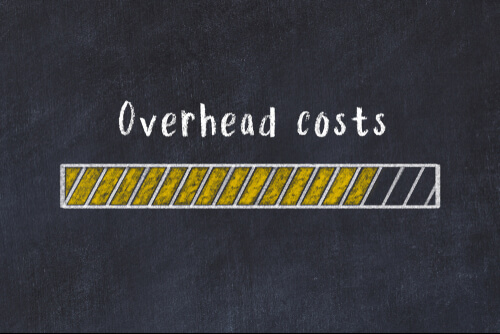Increasing profit often requires a focus on increasing revenue. However, lowering internal costs are another essential part of the puzzle. If you spend too much, you leave money on the table, especially with low revenue growth.
Cutting costs, however, can result in lost productivity, employee turnover, and other problems that can quickly spiral your company downward. However, understanding overhead costs and how to reduce them can help your company thrive.
Overhead Costs Companies Spend On
Overhead is your essential bills. It does not count wages and salaries but does count employee benefits, building costs, property taxes, utilities, etc. These are the things you have to spend to stay in business.
For HR departments, these overhead costs include:
- Submitting payroll taxes on schedule to avoid non-compliance fines.
- Health insurance benefits, which become mandatory once you have 50 full-time equivalent employees
- Paid time off, such as vacation and sick time
Other overhead costs might include property insurance and your rent or mortgage, building maintenance costs not handled by your landlord, utilities, and maintaining equipment and buying supplies. Many of these costs cannot easily be reduced. For example, the only way to lower building costs is to move to a cheaper location, which may not be possible and will likely impact your company in other ways.
Outsource Benefits For Lower Overhead Costs
It is very tempting to cut employee benefits to save money. While healthcare is a legal requirement for companies over a certain size, retirement plans are not. Dental and vision are also often cut or not provided in the first place.
Unfortunately, cutting benefits sacrifices productivity. Your employees get less and will likely feel less cared about. Not providing health insurance to dependents can force your employees to seek other work if they get married or are welcoming a child. Cutting paid time off increases presenteeism, including employees coming to work sick. These employees are unproductive and can spread illness through the building if they have something contagious. They are also likely to make more mistakes, which can be costly.
It also impacts employee morale, where cutting benefits is worse than not offering them in the first place. Your employees will disengage, become less productive, and may start looking for jobs elsewhere. An increase in turnover will more than eat up whatever you saved in hiring costs and cost you valuable institutional memory. Employees that do not have good health benefits will also avoid seeking preventive care, meaning they are more likely to get sick and either has to take time off or struggle through their workday when not a hundred percent.
The alternative is to outsource benefits. By working with a professional employer organization (PEO), you access their employee benefits. They can leverage economies of scale you can't find on your own and allows you to offer better benefits for a lower cost.
Streamline Your Workflow and Lower Costs
PEOs can negotiate better benefits, but that isn't the only area they can reduce costs. They can also lower your workers' comp costs by giving you access to their experience modifier, which will likely be better than yours and insulate you from a claim's impact.
PEOs also provide comprehensive payroll services, which removes payroll from your HR team's responsibilities. Unlike payroll providers, PEOs file payroll taxes for you and help ensure compliance. They can provide healthcare coverage that includes vision, dental, and mental health coverage.
Finally, they can help you offer a retirement plan and improve your onboarding and training methods, so you give new staff a much better impression. PEOs have seen it all, so their expertise in everything ranging from employment law compliance to safety and writing good employee management is high. You can benefit from this expertise, helping your business perform better. You may also save money on training without skimping on it by using their experience to target training better and help your employees develop their careers.
Reduce Your Employee Overhead Burden with a PEO Partner
Overhead costs are a necessity. Reducing them increases your business's profitability, but doing it incorrectly, mainly by cutting employee benefits, can be a false economy. However, HR overhead does not have to be a burden! Partnering with a PEO can streamline your workflow, reduce overhead costs, and free HR staff from grunt work so they can help your company work towards its goals.

